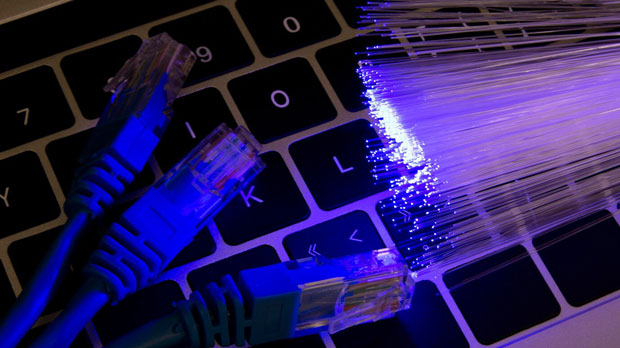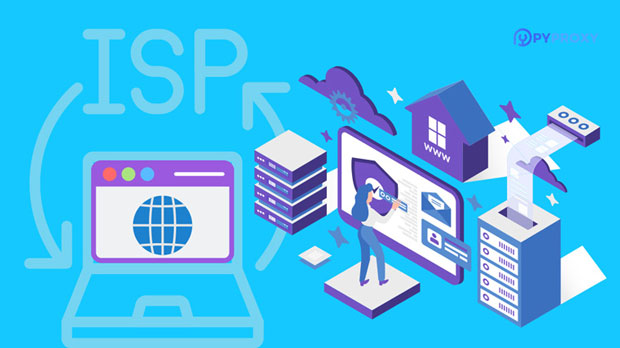How does the security of the SOCKS5 proxy compare to a VPN?
When evaluating online security options, many users are faced with the decision of choosing between a socks5 proxy and a Virtual Private Network (VPN). Both are tools that can help mask your IP address and enhance privacy, but they work differently and offer distinct security levels. In this article, we will delve into a detailed comparison of socks5 proxies and VPNs, focusing on their security features, functionality, and the situations where each might be more appropriate. This analysis will help users make an informed decision about which option suits their privacy and security needs. Understanding SOCKS5 Proxy and VPNTo begin with, it’s essential to understand what SOCKS5 proxies and VPNs are and how they function in terms of security. While both tools are often used for similar purposes, they operate at different layers of internet traffic.SOCKS5 Proxy: SOCKS5 is a protocol used for proxying internet traffic. It routes traffic through a server, hiding your IP address from websites or services you access. SOCKS5 operates at a lower layer than VPNs, which means it doesn't encrypt your traffic. Instead, it focuses primarily on relaying the data between your device and the destination server.VPN: A VPN, on the other hand, creates a secure and encrypted tunnel between your device and a remote server. This means that all your internet traffic is encrypted, including DNS queries, and your real IP address is masked. VPNs also tend to route traffic through a secure connection that ensures privacy not only from the websites you visit but also from your internet service provider (ISP).Security Differences: SOCKS5 Proxy vs. VPNThe key difference between SOCKS5 proxies and VPNs lies in their approach to security. Let’s break this down in more detail:1. EncryptionOne of the primary security differences is encryption. VPNs offer strong encryption for all data passing through the server, ensuring that even if someone intercepts the traffic, they will not be able to read or manipulate the data. Common encryption protocols used by VPNs include OpenVPN, IKEv2, and WireGuard, which are widely regarded as very secure.In contrast, SOCKS5 proxies do not provide encryption. While they effectively hide your IP address, they do not secure the data traveling between you and the destination server. As a result, if you are using a SOCKS5 proxy and someone intercepts your traffic, the data can be read in its raw form, which can be a significant privacy risk, especially when transmitting sensitive information like passwords or credit card numbers.2. Anonymity and IP MaskingBoth SOCKS5 proxies and VPNs can mask your IP address, but there are differences in how they achieve this and the level of anonymity they provide. A VPN hides your real IP address and routes all of your traffic through the VPN server. This means that all internet activities are anonymized, including DNS queries and other metadata, which can be crucial in maintaining complete online anonymity.A SOCKS5 proxy, on the other hand, only routes the traffic from the applications configured to use it. For example, if you use a SOCKS5 proxy for your web browser, it will hide the IP address of that particular browser but not the rest of your system’s internet activities. As a result, if other applications or services are still using your real IP, you may not be fully anonymous.3. Privacy and LoggingPrivacy is a significant concern when choosing between a SOCKS5 proxy and a VPN. VPNs generally emphasize privacy and are often marketed with no-log policies, meaning they do not retain any logs of your online activities. However, this depends on the service provider, as some may retain connection logs, metadata, or even browsing history. The key is to ensure that you choose a VPN provider that upholds a strict no-logs policy and is based in a jurisdiction that respects privacy.SOCKS5 proxies, on the other hand, do not have the same reputation for privacy as VPNs. While SOCKS5 proxies may not log as much data as some VPN services, the lack of encryption and the fact that many SOCKS5 proxy providers do not enforce privacy policies means that users may be more vulnerable to having their data logged or monitored. It is important to thoroughly research the SOCKS5 proxy provider’s privacy policies before deciding to use their services.4. Bypassing Geographical RestrictionsBoth SOCKS5 proxies and VPNs can be used to bypass geographical restrictions, such as accessing content that is blocked in certain countries or regions. However, because SOCKS5 proxies do not encrypt traffic, they can often be faster than VPNs when it comes to accessing content without noticeable lag or buffering.On the other hand, VPNs can also bypass geographical restrictions but may suffer from speed reductions due to the encryption overhead. In some cases, VPN traffic may be blocked by websites or services that detect VPN usage, making it harder to bypass region restrictions. However, many VPN providers offer advanced features like obfuscated servers or stealth mode, which helps disguise VPN traffic to avoid detection.5. Use Cases and Security ContextIn certain situations, using a SOCKS5 proxy may be more suitable than a VPN, particularly when speed is the top priority. Since SOCKS5 proxies do not encrypt traffic, they generally offer faster speeds compared to VPNs. This makes SOCKS5 proxies ideal for activities like streaming, gaming, or other real-time applications where low latency is critical. However, if you are concerned about security or privacy, especially when accessing sensitive information or using unsecured networks like public Wi-Fi, a VPN is clearly the safer option due to its encryption capabilities.Choosing the Right Option for YouWhen choosing between a SOCKS5 proxy and a VPN, the most important factor is understanding your specific security and privacy needs.- If privacy and encryption are your top priorities, especially when handling sensitive data or browsing on unsecured networks, a VPN is the better choice due to its strong encryption and robust security measures.- If speed is more important and you don’t require encryption, a SOCKS5 proxy might be more suitable, but you should be aware of the lack of security and privacy measures.- For general online anonymity and bypassing geo-restrictions, both tools can be effective, but the added security of a VPN is often the safer option.Ultimately, it depends on what level of security and privacy you require. For high-security use cases, especially when privacy is critical, a VPN will usually be the preferred choice. If you're simply looking to mask your IP address with minimal overhead and don’t need the extra layer of encryption, a SOCKS5 proxy could be a good fit.ConclusionBoth SOCKS5 proxies and VPNs serve useful purposes when it comes to online privacy and security, but they are designed for different use cases. SOCKS5 proxies are faster but lack encryption, making them a viable option for low-risk activities. VPNs, on the other hand, offer robust security and encryption, making them the better choice for protecting your online activities from hackers, surveillance, and other threats. Ultimately, your choice depends on the balance between speed and security that aligns with your personal needs and preferences.
2025-01-08

























































